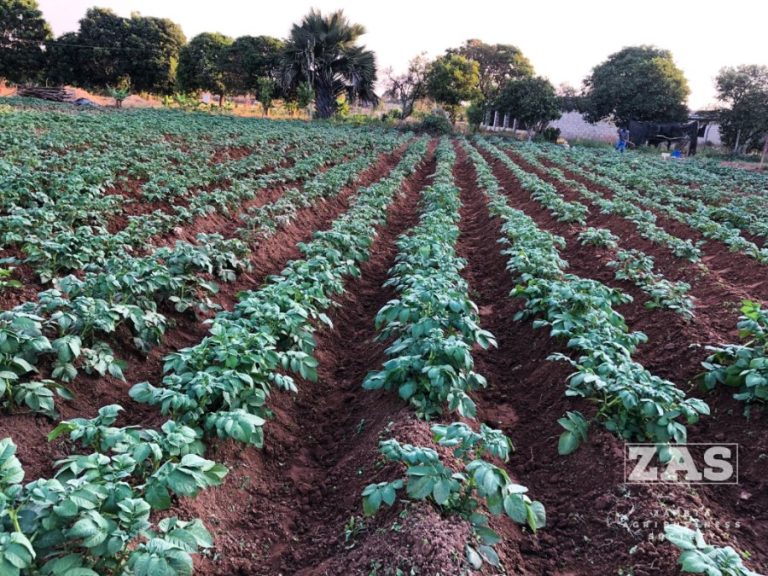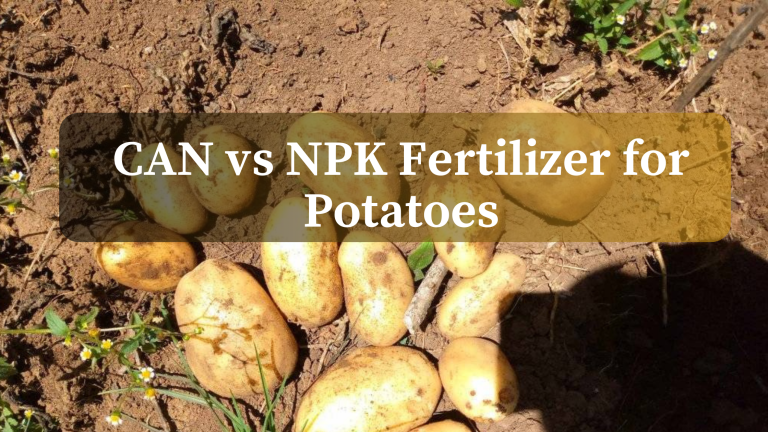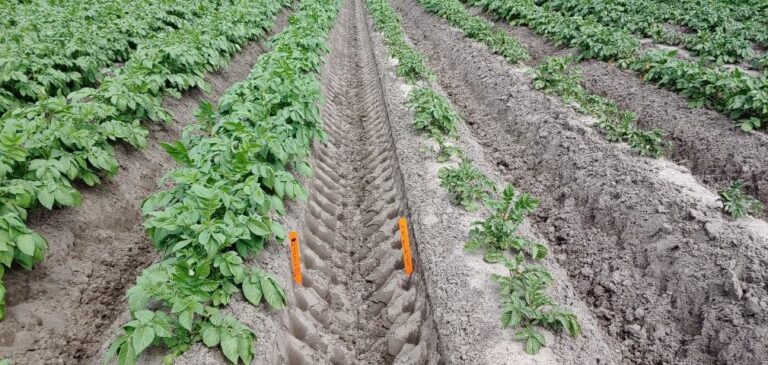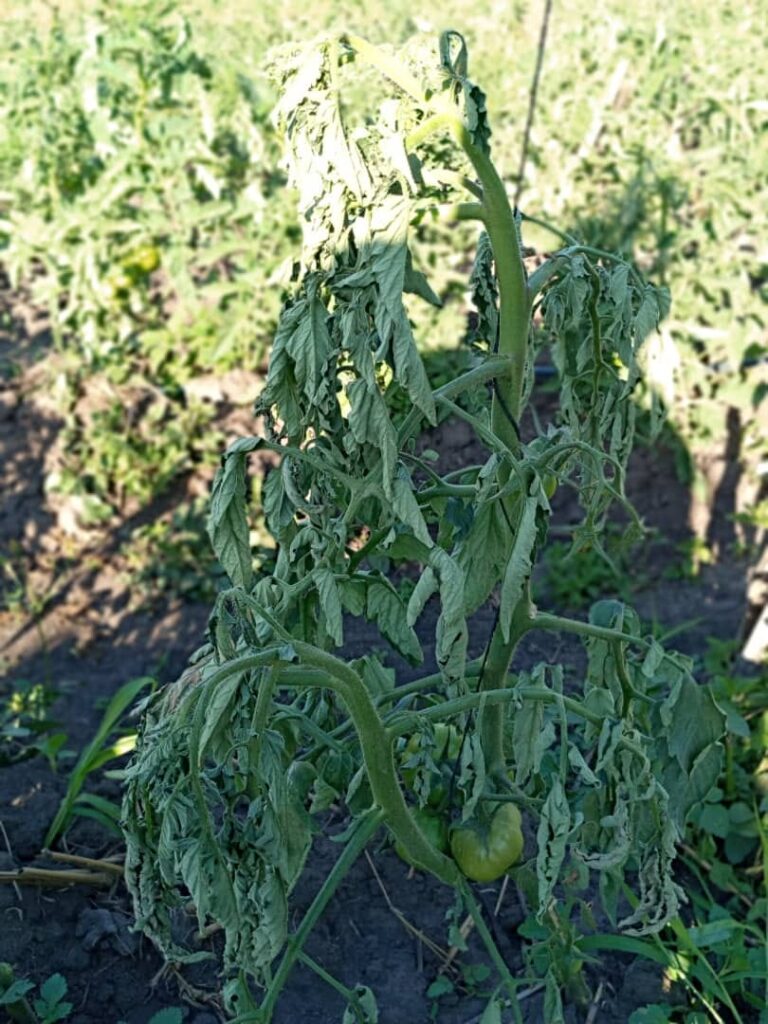Is DAP Fertilizer Good For Potatoes
Yes, DAP is a valuable fertilizer for potatoes, particularly for early growth and tuber development. It is beneficial for potato cultivation due to its high phosphorus and nitrogen content, supporting early root development, tuber set, and bulking.
Complementing DAP with other fertilizers and following soil testing recommendations can optimize nutrient supply and enhance potato growth and yield. By incorporating these practices, farmers can effectively use DAP fertilizer to achieve better potato crops.
DAP Fertilizer Composition & Potato Nutrient Requirements
Diammonium Phosphate (DAP) fertilizer is widely used in agriculture due to its high nutrient content. It contains 18% nitrogen (N) and 46% phosphorus (P2O5), making it a balanced source of two essential macronutrients. Understanding its benefits and application for potato cultivation can help optimize tuber size and yield.
Balanced Nutrient Supply:
-
- Phosphorus: DAP provides a high concentration of phosphorus (about 46% P2O5), which is crucial for root development and early plant growth. Phosphorus promotes strong root systems and improves the efficiency of nutrient and water uptake.
- Nitrogen: DAP also contains nitrogen (about 18% N), which supports overall plant growth, enhances leaf development, and boosts the plant’s ability to synthesize essential proteins and enzymes.
Benefits of DAP Fertilizer for Potatoes
- High Phosphorus Content:
- Early Growth and Root Development: Phosphorus is crucial for root development, especially during the early growth stages. It helps in the establishment of a strong root system, which is essential for nutrient uptake and overall plant health. DAP’s high phosphorus content supports this early root development, leading to better plant establishment.
- Tuber Set and Bulking: Phosphorus is also important during the tuber set and bulking stages. Adequate phosphorus ensures that tubers develop properly and achieve optimal size. Applying DAP can help meet the high phosphorus demand during these critical growth stages.
- Nitrogen Content:
- Leaf Canopy Development: Nitrogen is essential for vegetative growth, contributing to the development of a healthy leaf canopy. A robust canopy is important for photosynthesis, which fuels tuber growth. The nitrogen in DAP supports this canopy development.
- Tuber Growth: Nitrogen is also important for tuber bulking, where it helps in the production of photosynthates that are transferred to the tubers. However, nitrogen management is crucial to avoid excessive vegetative growth at the expense of tuber formation.
Application and Management of DAP for Potatoes
1. Timing of Application:
- Pre-Planting: Incorporating DAP into the soil before planting ensures that phosphorus is available for early root development. This practice helps in the quick establishment of potato plants.
- Side-Dressing: Applying DAP as a side-dress during the early stages of growth can provide a continuous supply of nitrogen and phosphorus, supporting both vegetative growth and tuber development.
2. Balancing Nutrients:
- Complementing with Other Fertilizers: While DAP provides essential nitrogen and phosphorus, potatoes also require other nutrients such as potassium, calcium, magnesium, and micronutrients. It’s important to complement DAP with other fertilizers to ensure a balanced nutrient supply.
- Avoiding Excess Nitrogen: Excessive nitrogen can lead to lush vegetative growth and delay tuber formation. Careful management of nitrogen, including the use of DAP, is necessary to balance canopy growth and tuber development.
3. Soil Testing and Adjustment:
- Soil Testing: Conducting a soil test before applying DAP can help determine the existing nutrient levels and adjust the fertilizer application rate accordingly. This ensures that the nutrients are supplied in the right amounts, avoiding deficiencies or excesses.
- Adjusting pH: DAP can temporarily lower soil pH, which might affect nutrient availability. Monitoring and adjusting soil pH, if necessary, can help maintain optimal growing conditions for potatoes.
Rate of Application:
-
- Soil Testing: Conduct a soil test to determine the exact phosphorus needs of your soil. Recommendations can vary based on soil fertility and crop requirements.
- Recommended Rates: Common application rates range from 200 to 400 kg/ha, but this can vary. Always follow local guidelines and recommendations based on soil tests.
Considerations
- Soil pH: DAP can affect soil pH over time, generally making the soil more acidic. Regularly monitor soil pH and adjust with lime if necessary to maintain optimal growing conditions for potatoes.
- Compatibility: DAP can be used in conjunction with other fertilizers or soil amendments as part of a comprehensive fertilization strategy.
Potential Drawbacks of DAP for Potatoes
1. Soil pH Impact:
- Acidification: DAP can lower soil pH temporarily due to the release of ammonium, which converts to nitrate and releases hydrogen ions. In soils that are already acidic, this can further lower the pH and affect nutrient availability.
- Monitoring pH: Regularly monitor soil pH and take corrective measures, such as liming, to maintain optimal pH levels for potato growth.
2. Over-Application Risks:
- Nutrient Imbalance: Over-application of DAP can lead to an imbalance of nutrients, particularly nitrogen, which can cause excessive vegetative growth and reduce tuber yield.
- Environmental Impact: Excess phosphorus can run off into water bodies, causing environmental issues such as eutrophication. Proper application rates and timing are essential to minimize this risk.






